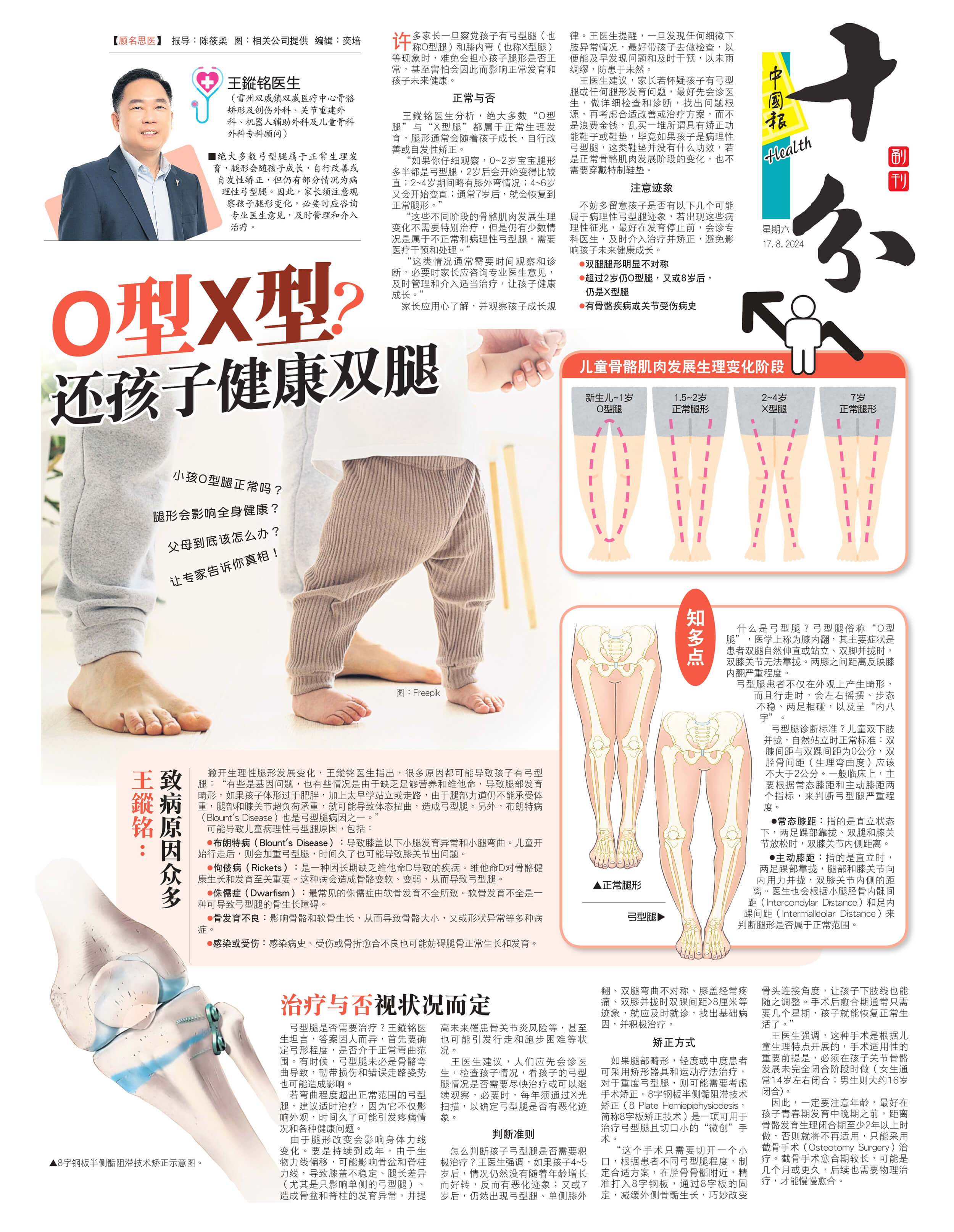Is It Normal For Children To Have O-Shaped Legs? Can The Shape Of The Legs Affect The Health Of Their Body? Let Expert Tell What Parents Should Do
17 August 2024

Many parents are concerned about the shape of their children's legs once they realize their children have bow legs (also known as O-shaped legs) and inward bending of the knee (also known as X-shaped legs). They are even afraid that normal development and future health of their children may be affected due to these phenomena.
 Consultant Orthopaedic & Trauma Surgery, Paediatric Orthopaedic Surgery from Sunway Medical Centre, Dr Ong Shong Meng explained, majority of “O-legs” and “X-legs” are normal physiologic developments, and the shape of the legs usually improves or corrects spontaneously as the child grows.
Consultant Orthopaedic & Trauma Surgery, Paediatric Orthopaedic Surgery from Sunway Medical Centre, Dr Ong Shong Meng explained, majority of “O-legs” and “X-legs” are normal physiologic developments, and the shape of the legs usually improves or corrects spontaneously as the child grows.
He says, physiologic changes in skeletal-muscular development at different stages do not require specific treatment, however, there are still a few cases of abnormal and pathologic bowed legs that require medical intervention and management.
He added, these conditions usually take time to observe and diagnose, and parents should consult with a medical professional if necessary for timely management and intervention of appropriate treatment for the healthy development of their child.
He also suggests if parents suspect their children have bowed legs or any leg development problems, it is best to consult a doctor for a detailed examination and diagnosis to find out the root cause of the problem, as well as consider the appropriate improvement or treatment options.
Putting aside the physiological developmental changes in leg shape, Dr Ong points out there are many reasons why a child may have bowed legs.
“Some are genetic problems, and in some cases, the legs develop abnormally due to a lack of adequate nutrients and vitamins.
"If a child is too obese and learns to stand or walk too early, the leg and knee joints are overloaded with weight as the leg force still cannot bear the weight, which may lead to a distorted body shape and result in bow-leggedness," he says.
Whether bowed legs require any treatment, Dr Ong says it is varies from person to person.
"The first step is to determine the degree of bowing and whether it falls within the normal range of curvature. Sometimes, bowlegs may not be caused by bony curvature; ligament injuries and faulty walking posture may also play a role," he added.
He also suggests one should first consult a doctor to examine the child's condition to see if the child's bowleg condition needs to be treated as soon as possible, or can be kept under observation, and if necessary, must be scanned annually by X-rays for signs of worsening bowlegs.
Source: China Press





